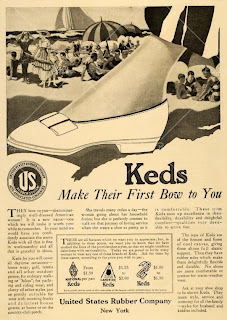In the early part of the decade, fashion was fairly dignified, but in 1914, World War I broke out. The world changed and by the end of the decade, so did fashion. Many other events also changed society, for example; the women's suffrage movement, the Great Influenza and the titanic sank in 1912.
Dresses took on a whole new dimension. Gone was the corseted waist and in its place was the hobble skirt. Paul Poiret is credited with this fashion movement heavily influenced by Eastern design and colors. Some skirts were so narrow that it was nearly impossible to move. For fear of splitting the skirt, women sometimes wore a length of cord to keep their legs from moving apart too much. It is not clear why they thought this was a good idea, but it's interesting that this movement occurred alongside the suffrage movement.
The Great War (1914 to 1918) changed people's lives in dramatic ways. Men went off to fight and women were left at home to work in the factories. As women's independence increased, so did the workload and there need for practical shoes increased. People were encouraged to be less frivolous. Clothing became more like uniform and took on a mannish tailored appearance. Hemlines began to inch up as wartime shortages made fabric scarce. Lace-up boots came back into fashion, valued for practicality. Mens and women's fashion started to become very similar. Many materials were used in shoe construction, for example; leathers mixed with canvas or gabardine to form a 'two-tone' effect.
Fashion took another turn when the war ended. As peoples intentions and interests changed, so did clothing. Sportswear became increasingly popular and were formed into everyday dress. U.S. Rubber developed the first sneaker, called Keds, in 1917. The word "sneaker" was coined quite literally because the rubber sole made the shoe stealthy — all other shoes, with the exception of moccasins, made noise when you walked!
Overall i feel that from 1910 to 1920 fashion took many twists and turns. From glamourous to workwear to sportswear, it got increasingly more comfortable and practical took on a new meaning.




